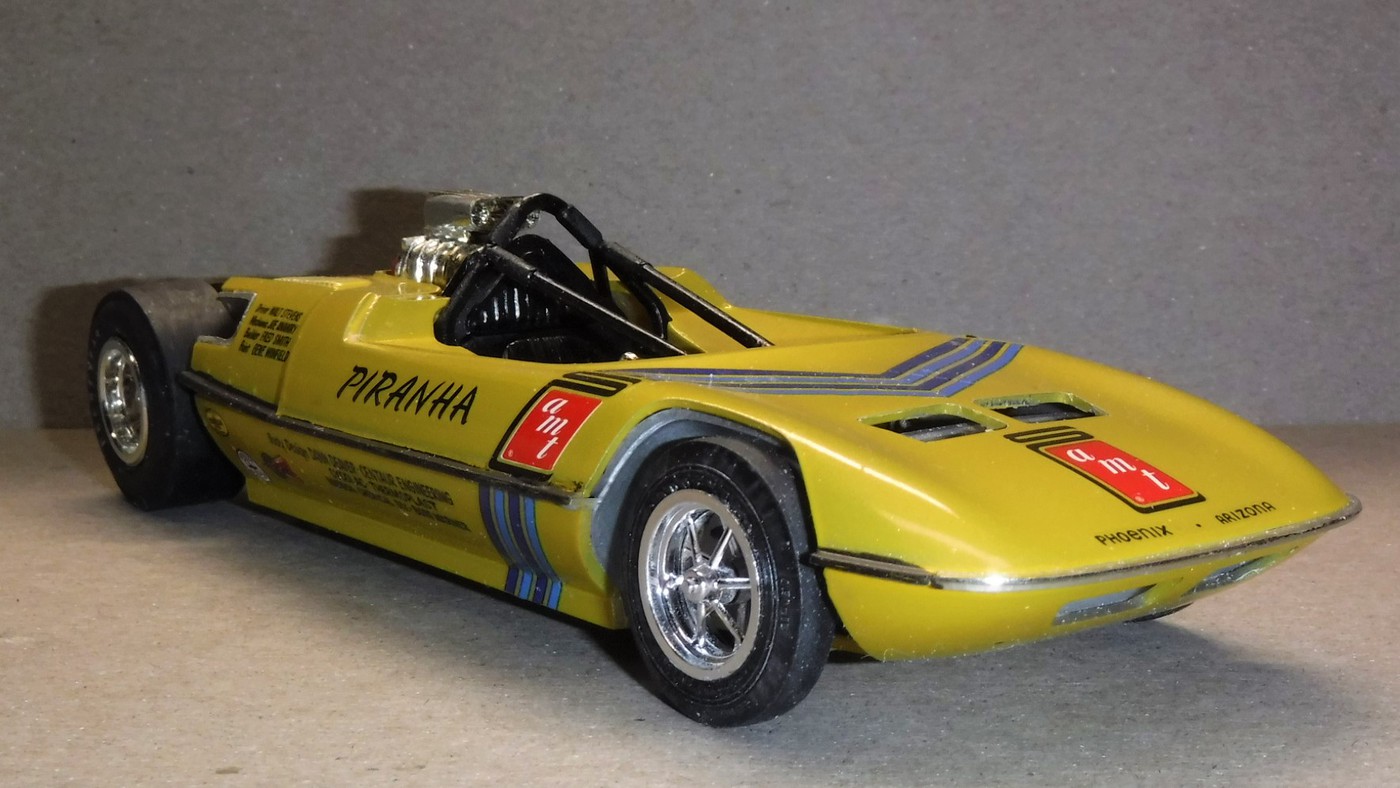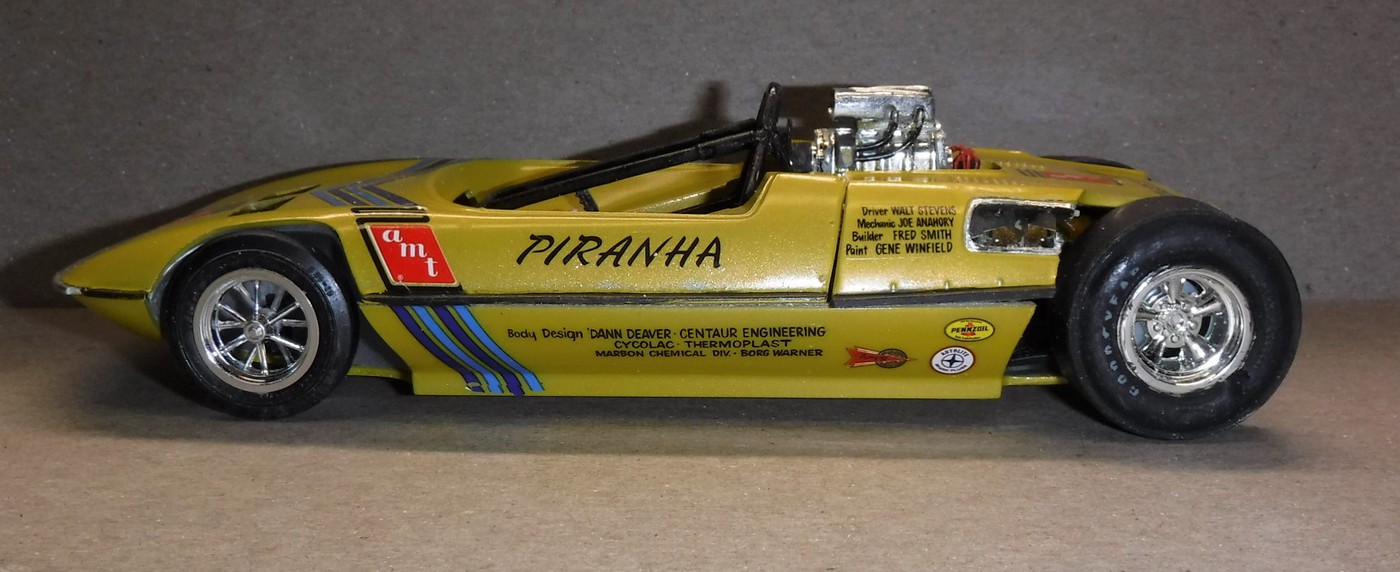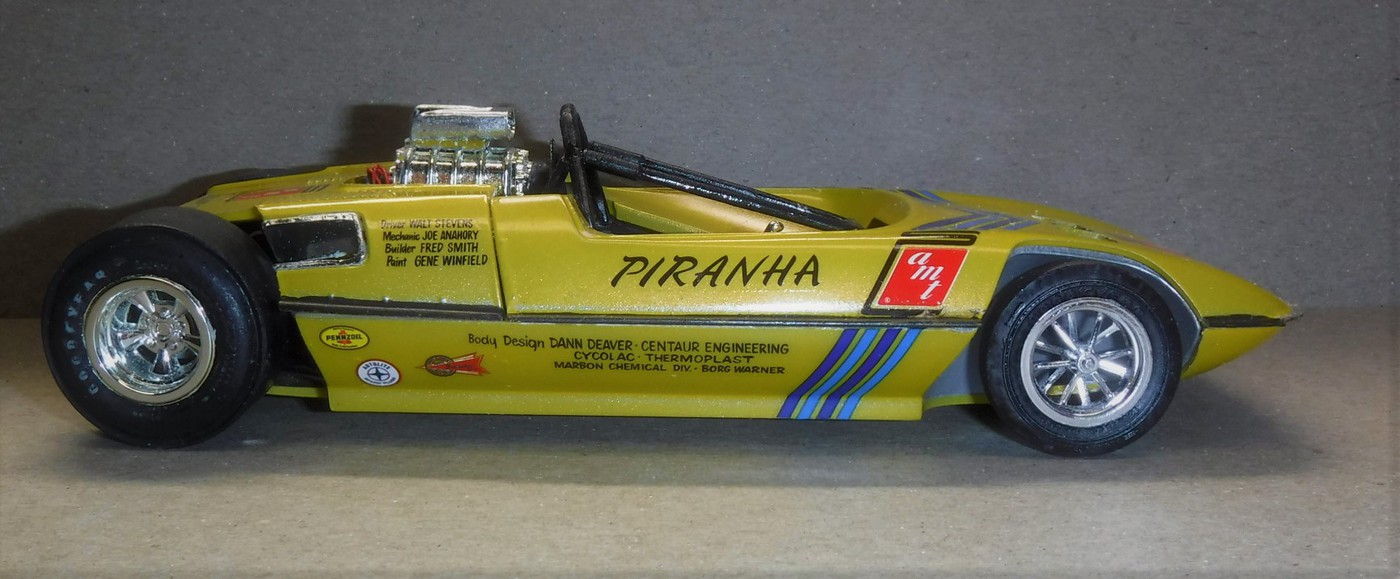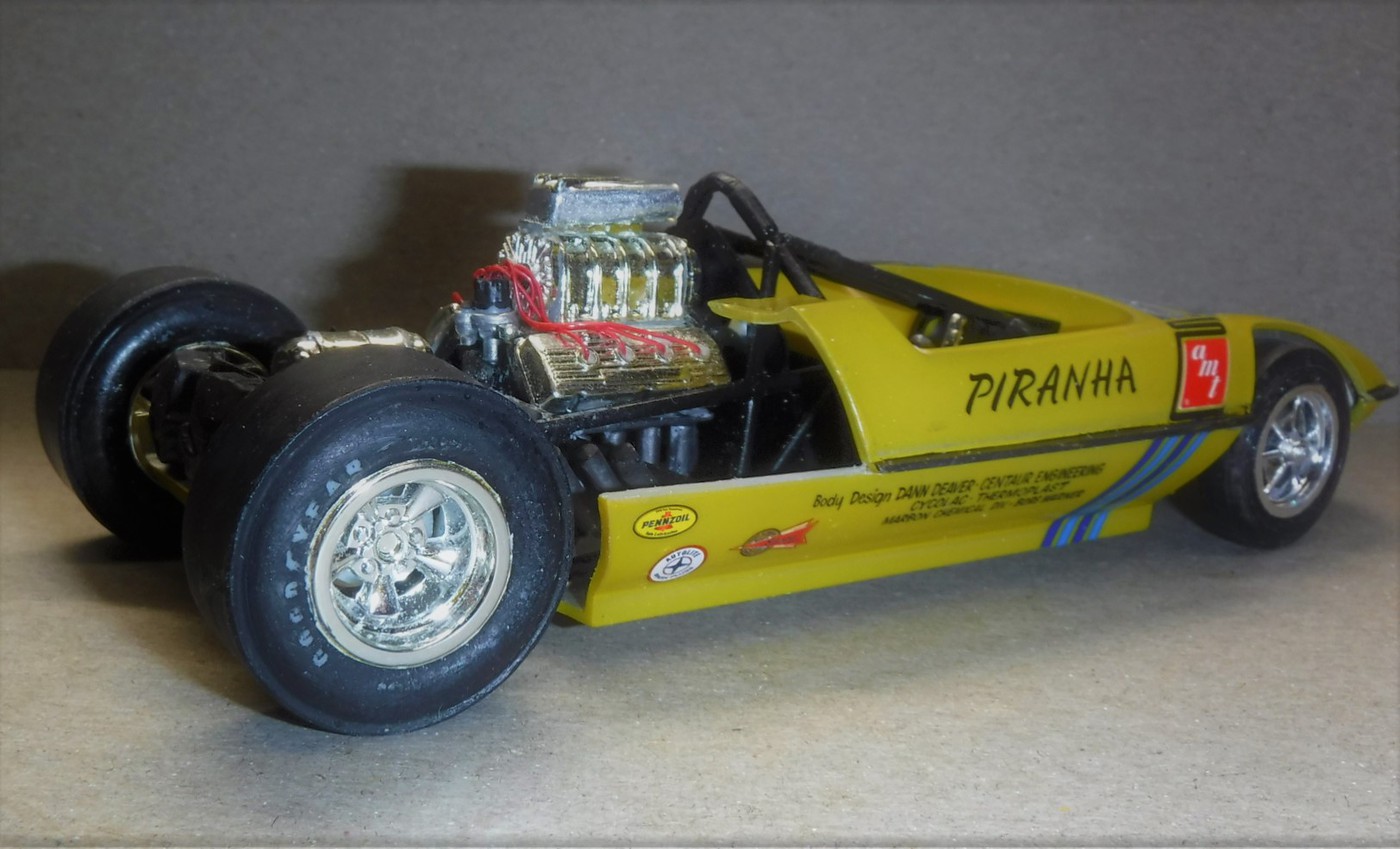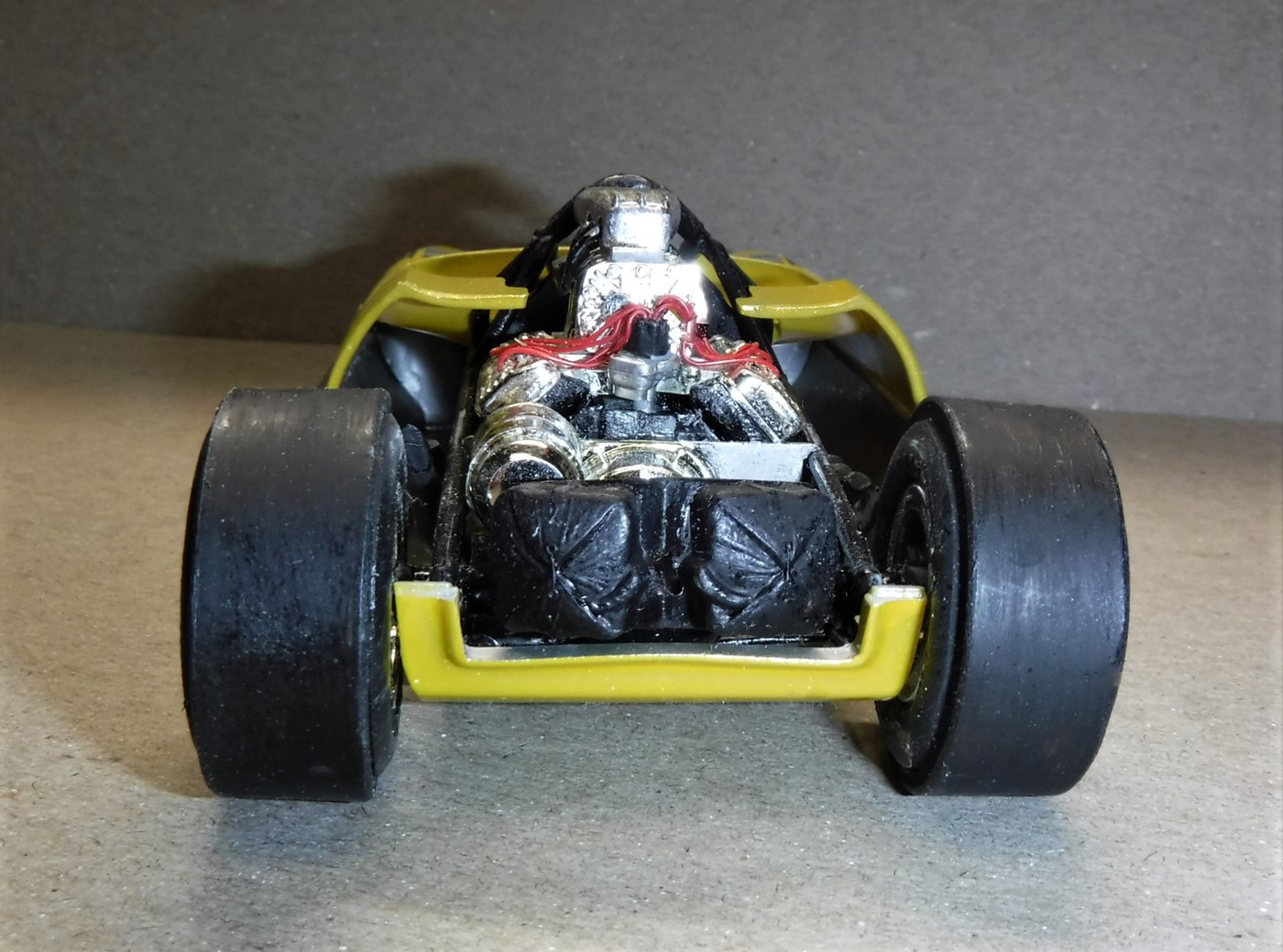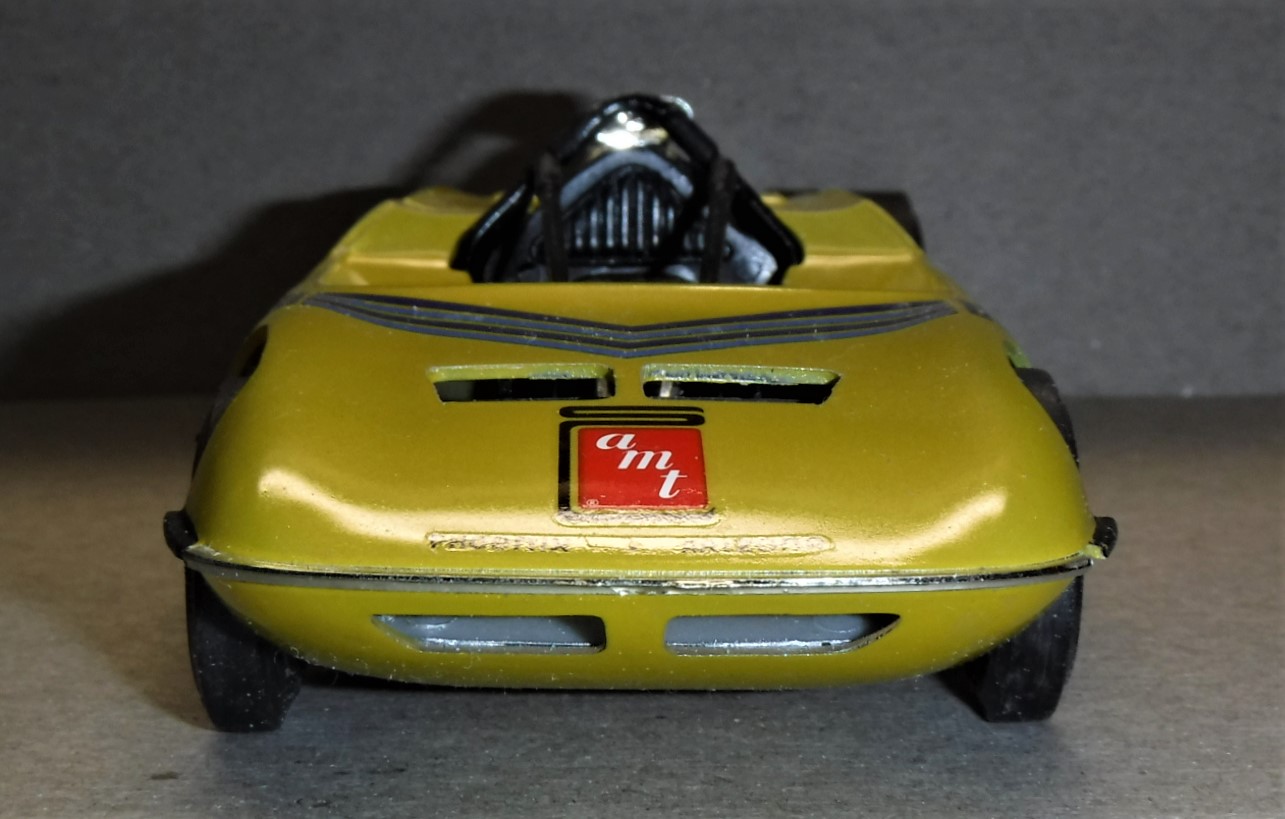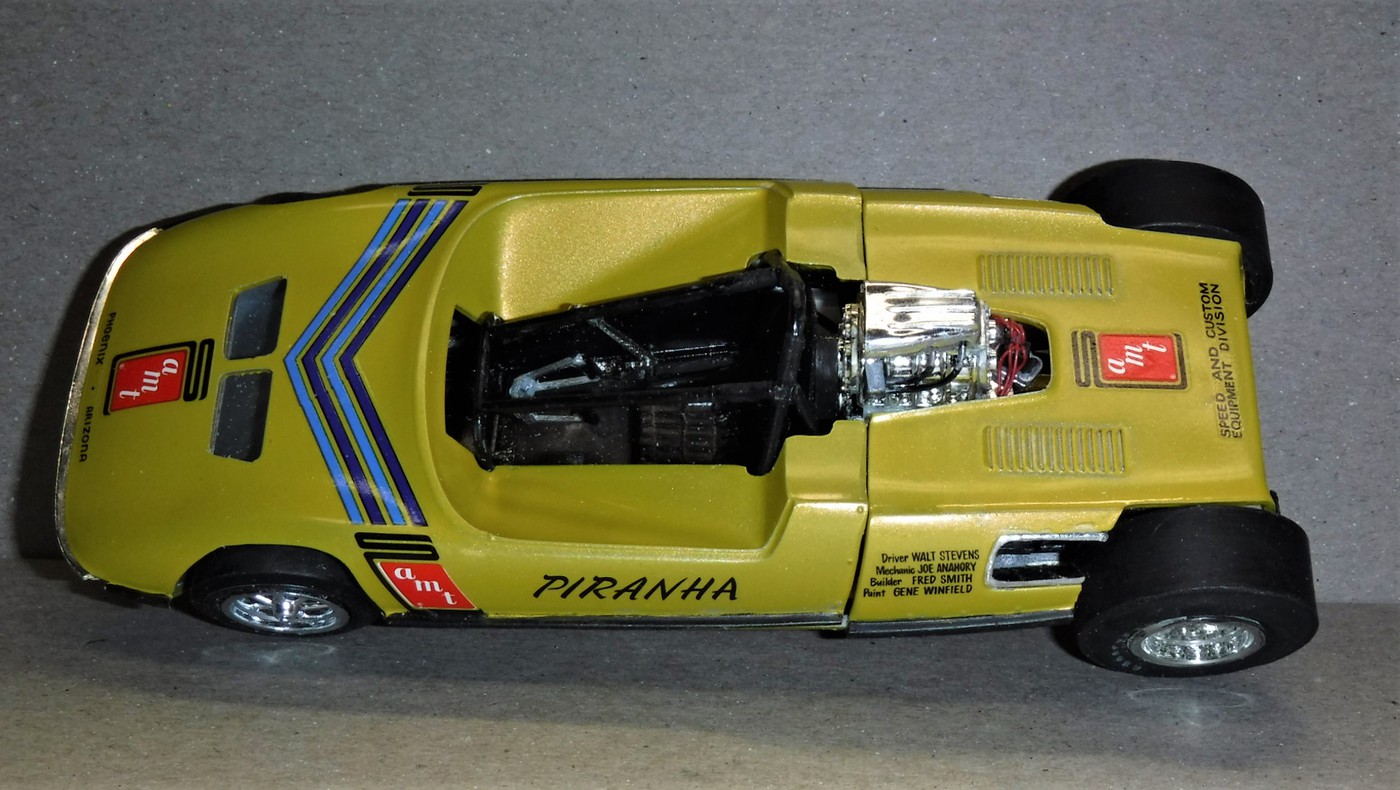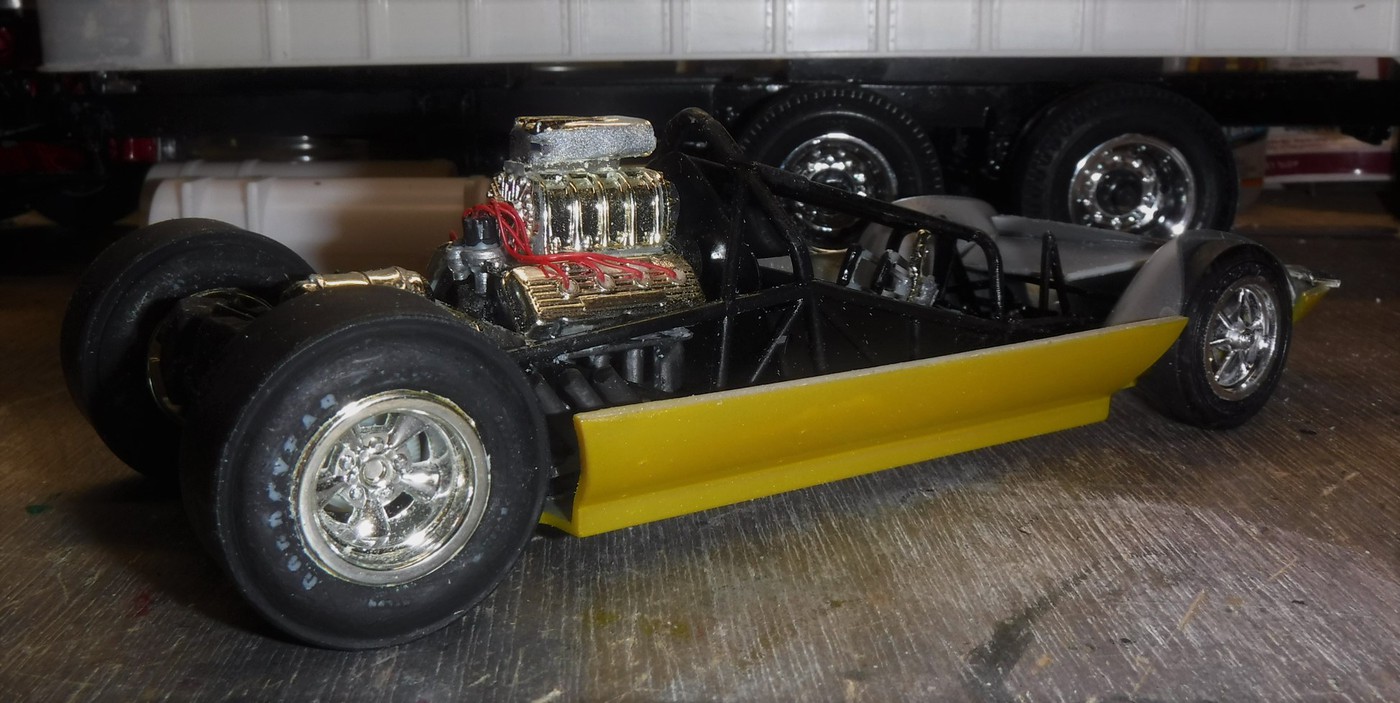Post by 41chevy on Sept 18, 2022 12:45:09 GMT -5
AMT purchased the rights from Marbon to build and market their "plastic" car and bought its inventory of plastic bodies and fiberglass chassis. It hired noted California customizer Gene Winfield – who had been in the fold since 1962 helping design model cars -- to lead a team to design and build plastic sports cars at its new Speed & Custom Division, gave the car a new name -- the Piranha --and decided to promote the venture on the dragstrip.
Fred Smith, a former employee of Don Garlits, was just 24 when he designed and built the chassis, which was wrapped in a body made of two pieces of vacuum-formed 3/16-inch Cycolac. An opening was cut in the nose to duct air through the body and over the cowl to keep the nose down. The car was painted a lemon gold color that blended to bronze farther down its Despite its dragster-like shape, the car was actually built to compete in Funny Car. The bare chromoly frame was rigid to improve handling and weighed just 68 pounds and featured a tubular front axle suspended by a transverse torsion bar. The Piranha had a 120-inch wheelbase, was 148 inches from snout to tail, and stood less than 40 inches high and weighed just 1,550 pounds race-ready.
Walt Stevens and wrench Joe Anahory, of Dead End Kids fame, got the call to campaign the wild machine in mid 1965. In its debut at Southern California's Irwindale Raceway, Stevens shoed the car to an 8.81 at 182.64 mph. In October 1966, after the contract with Stevens and Anahory ended, AMT briefly gave the car to Don Cook and Connie Swingle for an attempt at the first Funny Car run to exceed 200 mph. Although there were reports of a 200-mph pass, according to Dave Wallace Jr., " Swingle hit 8.08 at 197.67 mph at Lions and believes that to be the car’s top speed ever."


